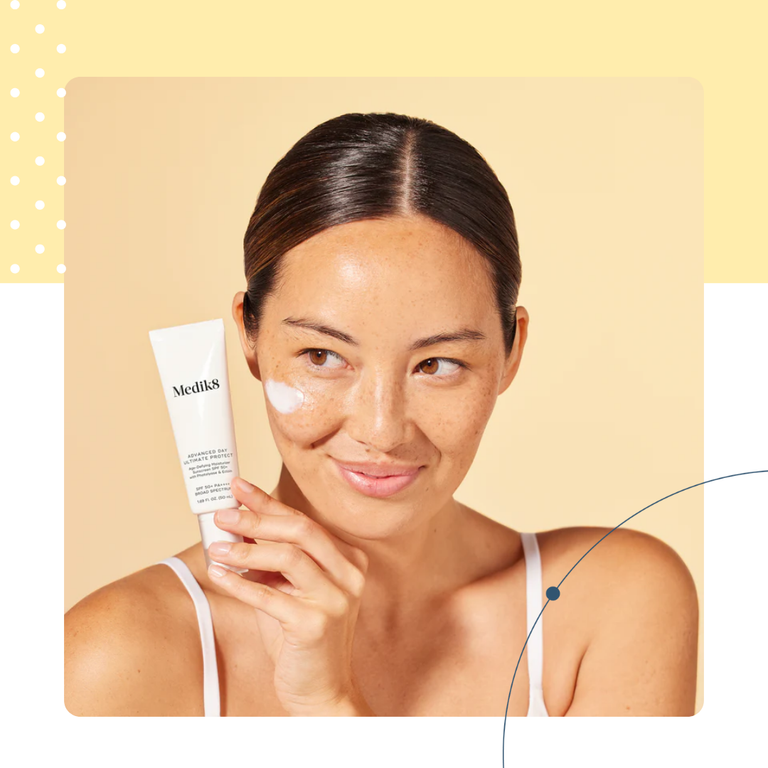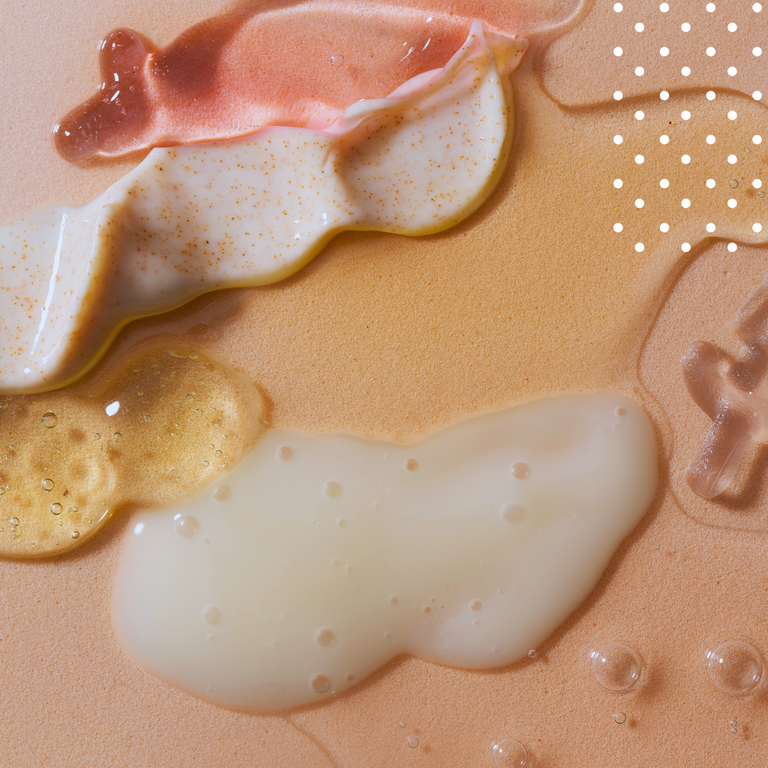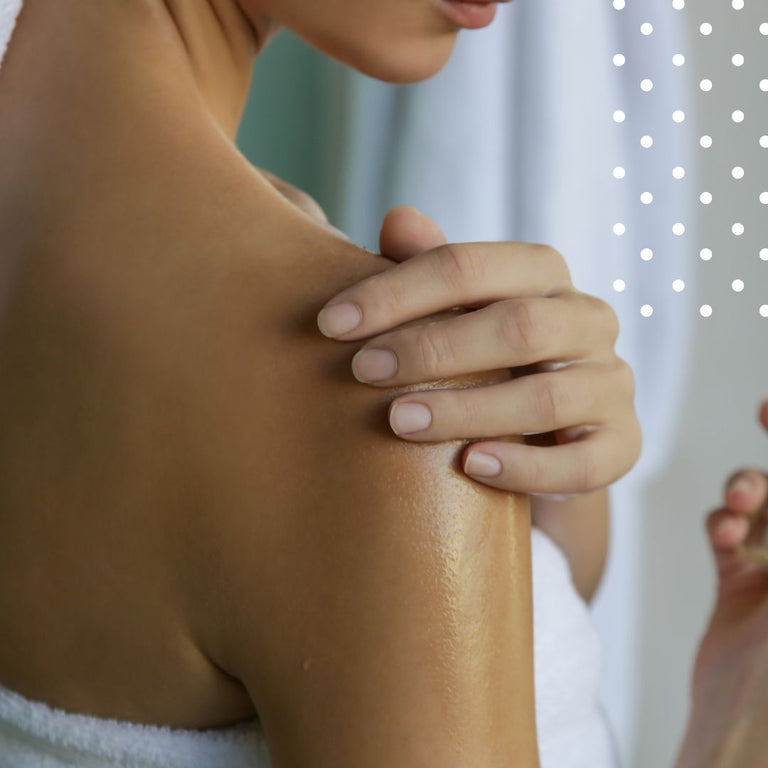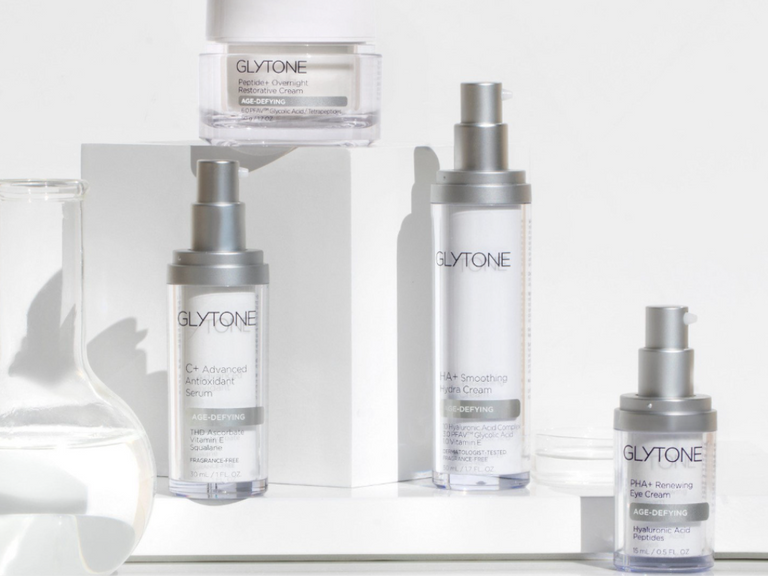AHAs (alpha hydroxy acids) might sound intense, but they’re actually one of the most effective and well-loved ingredients in modern skincare. Known for their exfoliating power, AHAs help target a range of skin concerns — from hyperpigmentation and acne to fine lines and dullness. When used correctly, they reveal a brighter, smoother, and more youthful-looking complexion.
But did you know there are several types of AHAs, and each one works a little differently? Don’t worry — we’ll guide you through everything you need to know.
At Face Dr, our team of Skin Experts have decades of experience helping clients find the right ingredients for their skin type. In this guide, we’ll explain:
- What AHAs are and how they work
- The key benefits of AHAs for your skin
- How to use them safely and effectively
- Which type of AHA is best for you
- What to avoid when using AHAs
- Our top AHA product recommendations
Prefer a personalised approach? You can book a free online skincare consultation with one of our experts. We’ll analyse your skin, discuss your concerns, and create a custom plan featuring the most effective AHAs and supporting ingredients for you.
Want to find out more? Here are the questions we’ll cover:
- What are AHAs?
- What do AHAs do for the skin?
- How do you use AHAs?
- Are AHAs right for me, and which AHA should I choose?
- What are the side effects of AHAs?
- Which ingredients can you use with AHAs?
- Products to try with AHAs
Want the lowdown on specific AHAs? We’ve covered lactic acid, glycolic acid and mandelic acid.
What are AHAs?

AHAs, or alpha hydroxy acids, are a group of acids that are commonly found in skincare. You might see these on the ingredient list as simply “AHAs,” but often specific acids will be mentioned.
Look out for:
- Lactic acid
- Mandelic acid
- Glycolic acid
- Citric acid
- Malic acid
These acids are derived from different things like milk, apples, sugar cane or bitter almonds. They’re also often made synthetically in a lab. There’s plenty of research behind them—especially lactic and glycolic acid—showing how safe and effective they are.
What do AHAs do for the skin?
AHAs work as an exfoliant on the skin, meaning they help to break down dead skin cells on the surface so they come off more easily. This reveals a brighter, clearer and more youthful complexion underneath. As well as targeting specific concerns, AHAs are a great ingredient to introduce into your routine to simply keep the skin looking its best.
Here’s what AHAs can do:
- Brighten hyperpigmentation
- Even out skin tone
- Clear up acne and breakouts
- Smooth wrinkles and fine lines
- Improve skin texture
- Reduce the look of visible pores
What do AHAs do for the skin?

AHAs are absorbed into the skin, and the acid in the ingredient breaks down the bonds between dead skin cells. Once loosened, these dead skin cells can be sloughed off the skin, revealing the younger, healthier skin cells beneath. With these dead skin cells out of the way, the skin can absorb skincare products better—meaning you really get your money’s worth—and you start to see better results from other ingredients.
By removing the dead skin cells, the skin is also triggered into making more fresh young skin cells, leaving you with a glowing complexion.
But AHAs do more than just exfoliate. They can also trigger the skin into making more collagen—the protein responsible for the skin’s structure and suppleness. With more collagen, the skin looks more plump and firm, and lines, wrinkles, and even sagging are all visibly improved.
How do you use AHAs?
You won’t have a hard time finding a skincare product with AHAs. The skincare industry knows the benefits of these acids all too well, so you’re spoilt for choice. You can find AHAs in everything from cleansers to serums, moisturisers to masks.
Daily products like cleansers and moisturisers often have a lower percentage of AHAs in as they’re designed for everyday use. Serums and masks—particularly those designed to be used two to three times a week—will have a stronger percentage.
The highest percentages of AHAs are found in in-clinic treatments though, like facials and peels. These need to be administered by a skincare practitioner as they’re stronger.
If you’ve never used AHAs before, start slow. Look for a low-percentage product—like a cleanser or daily serum—and consider a weaker acid to start, like lactic acid or mandelic acid. Start with a patch test on your wrist or inside your elbow to see how your skin reacts. If after 24 hours everything is clear, you can try the product on your face. If you’re prone to sensitivity, you can start using the product just once a week and then build up to the recommended usage slowly.
Book a free consultation today
Are AHAs right for me?
AHAs are generally considered safe for all types of skin, including dry, sensitive and darker skin tones. They’re even safe for use during pregnancy.
Lactic acid is derived from milk, but scientists agree that it’s safe for those who are lactose intolerant. Vegans, however, should look out for lactic acid products that are made from sugar beet or in a lab, instead.
Mandelic acid is made from bitter almonds, but is safe for those with a nut allergy. However, if you’re worried about reactions, speak with an expert who can advise you on the best AHA to use, or even other ingredients that can tackle the same concerns.

Which AHA should I choose?
There is variation between the different types of AHAs, so that’s when speaking with an expert to make sure you’re using the right one can be helpful.
Lactic acid and mandelic acid are made of larger molecules, which can’t penetrate as deeply into the skin as other AHAs, like glycolic acid, do. This means they aren't as irritating, so they’re perfect for those who find glycolic acid too drying, those who are just starting out with AHAs or anyone who is prone to redness and sensitivity. You can find out more about lactic acid and mandelic acid here.
Glycolic has the smallest molecular makeup out of all the AHAs and therefore can penetrate the deepest into the skin. This makes it more effective, but also potentially more irritating.
Glycolic acid is generally better for those with combination to oily skin, as those on the drier side may find it too drying, and those with sensitive skin may find it too harsh. However, if you can still try glycolic acid at lower percentages—look out for 2% products—which are less likely to be irritating. Find out more about glycolic acid here.
Not sure which to choose? You can often find products that contain a mixture of AHAs to get benefits from more than one. Alternatively, speak with an expert who can recommend the best one for your skin and your exact concerns.
Which ingredients can you use with AHAs?
AHAs can do wonders for the skin, but you do need to be careful about which ingredients you mix them with.
While you can easily find products that contain multiple different AHAs, it’s never usually recommended to mix different AHAs yourself in the same part of your routine. This is because the concentrations may be too strong and overly harsh on the skin. Instead, opt for a product that’s been specifically formulated to combine AHAs, or make sure you use different AHAs on different days in your routine.
Beyond other AHAs, you should also avoid mixing AHAs with a retinol product. Again, this can be irritating for the skin and lead to redness and dryness. You can use these at different points in your routine, though—such as a glycolic acid serum one night and a retinol serum the next night.
AHAs also don’t play nicely with vitamin C and niacinamide products. The acids can change the pH of these products, which lowers their effectiveness. While this isn’t unsafe, it just means you may be using—and spending money on—a product that isn’t doing anything for your skin. Instead, use a vitamin C or niacinamide in the morning, then an AHA product in the evening.
Not sure what other ingredients you should be keeping apart? We’ve covered exactly which skincare ingredients can and can’t mix here. You can also speak with one of our skin experts for free to get the seal of approval on your exact routine.

What are the side effects of AHAs?
No skincare ingredient is perfect, unfortunately, and just like with anything else, AHAs may come with some side effects. Luckily, most people don’t experience any, and even if they do, it’s usually mild and the side effects go away quickly on their own.
Look out for:
- Dry patches
- Itchiness
- Redness
- Stinging
If you experience side effects, stop using the product and reach out to a skin expert if they’re severe or don’t go away on their own. Most people find that even simply reducing the number of times they use an AHA each week can help reduce these side effects.
Face Dr top tip: Watch out! AHAs also make your skin more sensitive to the sun, so using a high-grade sunscreen every day is more important than ever.
Product to try: ZO Skin Health’s Daily Sheer Broad Spectrum.
Products to try with AHAs
Sold on the benefits of AHAs? Here are some of our favourite products to add to your routine:
- ZO Skin Health Exfoliation Accelerator — add glycolic and lactic acid to your routine with this serum that also contains soothing ingredients to promote a glowing complexion, without the irritation.
- ZO Skin Health Oil Control Pads — these easy-to-use pads come pre-soaked with glycolic acid and mandelic acid so you can get the benefits of two perfectly formulated AHAs.
- Medik8 Clarifying Foam - A gentle foaming cleanser for blemish-prone and congested skin. Formulated with AHAs and BHAs, it gently exfoliates, unclogs pores, and removes impurities to reduce breakouts and prevent future blemishes.
Need expert advice?

Choosing the right ingredients can make all the difference when it comes to skincare, but figuring out which ones are right for you is no easy task. When it comes to AHAs, choosing the wrong acid can lead to irritation and redness, or simply not the results you were hoping for. That’s where our experts can help.
At Face Dr, we offer free online skincare consultations where you can speak to a member of our team. On a 30-minute video call from the comfort of your home, our experts can analyse your skin and ask about any specific concerns you want to tackle—like acne, ageing or dark spots. Armed with this information, they’ll be able to recommend the best AHA to help or any other ingredients that may be even more suitable.
Plus, they can help you build the best skincare routine—without any clashing ingredients—to take care of your skin. Got other questions about AHAs we haven’t answered here? Our experts are all ears.
When it comes to product recommendations, we only ever share brands and products we’ve tried, tested and seen results from. There’s never any obligation to buy, but if you do, we’ll send your new products directly to your door, so you can start using—and seeing the results from—AHAs straight away.








